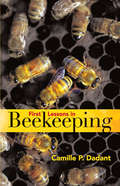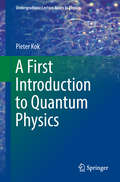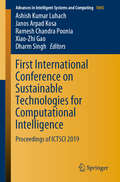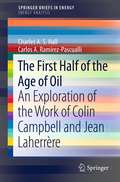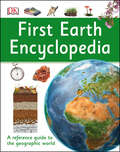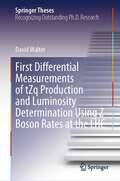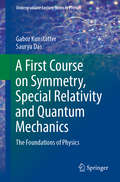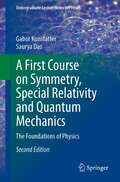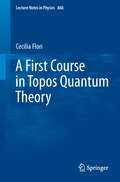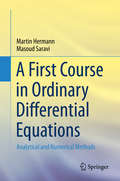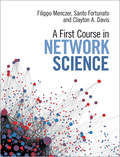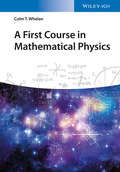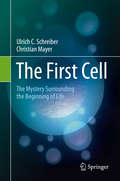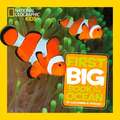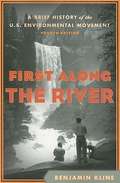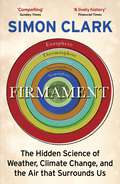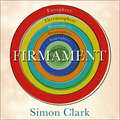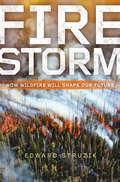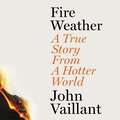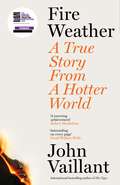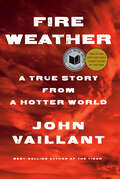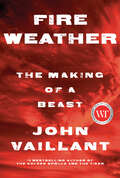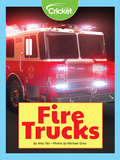- Table View
- List View
First Lessons in Beekeeping
by Camille Pierre DadantIn light of the dwindling honey bee population, this century-old guide is more relevant than ever. Written by the scion of a celebrated family of beekeepers that continues to operate today, the richly illustrated volume is the perfect companion for beginning beekeepers as well as those with a casual interest in bees. Reader-friendly information ranges from background on bee anatomy and the social structure of bee communities to different types of hives and how they function, honey production, wintertime beekeeping, and other practical matters. Author Camille Pierre Dadant was the son of Charles Dadant, one of the fathers of modern beekeeping techniques, inventor of the Dadant beehive, and founder of one of the first beekeeping equipment manufacturers. The business is still extant and run by the family, as is their publication, American Bee Journal. The old-fashioned charm of Dadant's narrative rests upon a solid foundation of timeless scientific knowledge, complemented by many informative drawings and photographs.
A First Introduction to Quantum Physics (Undergraduate Lecture Notes in Physics)
by Pieter KokIn this undergraduate textbook, the author develops the quantum theory from first principles based on very simple experiments: a photon travelling through beam splitters to detectors, an electron moving through a Stern-Gerlach machine, and an atom emitting radiation. From the physical description of these experiments follows a natural mathematical description in terms of matrices and complex numbers. The first part of the book examines how experimental facts force us to let go of some deeply held preconceptions and develops this idea into a mathematical description of states, probabilities, observables, and time evolution using physical applications. The second part of the book explores more advanced topics, including the concept of entanglement, the process of decoherence, and extension of the quantum theory to the situation of a particle in a one-dimensional box. Here, the text makes contact with more traditional treatments of quantum mechanics. The remaining chapters delve deeply into the idea of uncertainty relations and explore what the quantum theory says about the nature of reality. The book is an ideal and accessible introduction to quantum physics, with modern examples and helpful end-of-chapter exercises.
First International Conference on Sustainable Technologies for Computational Intelligence: Proceedings of ICTSCI 2019 (Advances in Intelligent Systems and Computing #1045)
by Xiao-Zhi Gao Dharm Singh Ashish Kumar Luhach Janos Arpad Kosa Ramesh Chandra PooniaThis book gathers high-quality papers presented at the First International Conference on Sustainable Technologies for Computational Intelligence (ICTSCI 2019), which was organized by Sri Balaji College of Engineering and Technology, Jaipur, Rajasthan, India, on March 29–30, 2019. It covers emerging topics in computational intelligence and effective strategies for its implementation in engineering applications.
The First Half of the Age of Oil
by Charles A. Hall Carlos A. Ramírez-PascualliAccording to the conventional wisdom, we live in a post-industrial information age. This book, however, paints a different picture: We live in the age of oil. Petroleum fuels and feedstocks are responsible for much of what we take for granted in modern society, from chemical products such as fertilizer and plastics, to the energy that moves people and goods in a global economy. Oil is a nearly perfect fuel: Energy dense, safe to store, easy to transport, and mostly environmentally benign. Most importantly, oil has been cheap and abundant during the past 150 years. In 1998, two respected geologists, Colin Campbell and Jean Laherrère, published a detailed article announcing that the "end of cheap oil" would happen before 2010, which meant that the world would face a peak, or at least a plateau, in global daily oil production in the first decade of the new millennium. Today, two billion people under the age of 14 have lived the majority of their lives past the point when this century-long growth in oil supplies came to an end, which also marks the end of the first half of the age of oil. This transition has ushered in a new reality of high oil prices, stagnating oil supplies, and sluggish economies. In this book, a leading authority on energy explores the contributions and continuing legacy of Colin Campbell and Jean Laherrère, the two geologists who modified the terms of the debate about oil. The book provides a unique perspective and state-of-the-art overview of today's energy reality and its enormous economic and social implications. - Covers a topic that eclipses climate change as the most important but least understood challenge for contemporary society - Explores the works of Colin Campbell and Jean Laherrère, the leading authorities in the field of Peak Oil, authors of "The End of Cheap Oil" (Scientific American, 1998), and founding members of the Association for the Study of Peak Oil & Gas - Addresses a broad audience of scientists, engineers, and economists in a format that is accessible to the general public - Provides a complete overview of the basic geological, chemical, physical, economic and historical concepts that every oil consumer should understand - Presents the latest information on oil production, reserves, discoveries, prices, and fields in easy-to-understand graphs and plots
First Earth Encyclopedia: A First Reference Guide to the Geographic World (DK First Reference)
by DKCovering the essential curriculum areas of human geography, physical geography, geology, and ecology, First Earth Encyclopedia is a comprehensive introduction to the world around us. The engaging style of DK's First Reference series is applied to such topics as where and how people live, how to use maps, weather, world environments, and the changing climate — inspiring younger readers to think about their own place in the world. With superb artwork, straightforward text, buttons, and quizzes, First Earth Encyclopedia makes our world simple to understand.
First Differential Measurements of tZq Production and Luminosity Determination Using Z Boson Rates at the LHC (Springer Theses)
by David WalterThis thesis describes two groundbreaking measurements in the precision frontier at the LHC: the first ever differential measurement of the Z-associated single top quark (tZq) production, and the luminosity measurement using Z boson production rate for the first time in CMS. Observed only in 2018, the tZq process is of great importance in probing top quark electroweak couplings. These couplings are natural places for new phenomena to happen in the top quark sector of the standard model. Yet, they are the least explored directly. One has to obtain a firm understanding of the modeling of sensitive distributions to new top-Z interactions. The present analysis marks a major milestone in this long-term effort. All distributions relevant for new phenomena, and/or modeling of tZq, are studied in full depth using advanced Machine Learning techniques.The luminosity and its uncertainty contributes to every physics result of the experiment. The method minutely developed in this thesis provides a complementary measurement that results in a significant overall reduction of uncertainties.
A First Course on Symmetry, Special Relativity and Quantum Mechanics: The Foundations of Physics (Undergraduate Lecture Notes in Physics)
by Gabor Kunstatter Saurya DasThis book provides an in-depth and accessible description of special relativity and quantum mechanics which together form the foundation of 21st century physics. A novel aspect is that symmetry is given its rightful prominence as an integral part of this foundation. The book offers not only a conceptual understanding of symmetry, but also the mathematical tools necessary for quantitative analysis. As such, it provides a valuable precursor to more focused, advanced books on special relativity or quantum mechanics.Students are introduced to several topics not typically covered until much later in their education.These include space-time diagrams, the action principle, a proof of Noether's theorem, Lorentz vectors and tensors, symmetry breaking and general relativity. The book also provides extensive descriptions on topics of current general interest such as gravitational waves, cosmology, Bell's theorem, entanglement and quantum computing.Throughout the text, every opportunity is taken to emphasize the intimate connection between physics, symmetry and mathematics.The style remains light despite the rigorous and intensive content. The book is intended as a stand-alone or supplementary physics text for a one or two semester course for students who have completed an introductory calculus course and a first-year physics course that includes Newtonian mechanics and some electrostatics. Basic knowledge of linear algebra is useful but not essential, as all requisite mathematical background is provided either in the body of the text or in the Appendices. Interspersed through the text are well over a hundred worked examples and unsolved exercises for the student.
A First Course on Symmetry, Special Relativity and Quantum Mechanics: The Foundations of Physics (Undergraduate Lecture Notes in Physics)
by Gabor Kunstatter Saurya DasThis book provides an in-depth and accessible description of special relativity and quantum mechanics which together form the foundation of 21st century physics. A novel aspect is that symmetry is given its rightful prominence as an integral part of this foundation. The book offers not only a conceptual understanding of symmetry, but also the mathematical tools necessary for quantitative analysis. As such, it provides a valuable precursor to more focused, advanced books on special relativity or quantum mechanics.Students are introduced to several topics not typically covered until much later in their education.These include space-time diagrams, the action principle, a proof of Noether's theorem, Lorentz vectors and tensors, symmetry breaking and general relativity. The book also provides extensive descriptions on topics of current general interest such as gravitational waves, cosmology, Bell's theorem, entanglement and quantum computing.Throughout the text, every opportunity is taken to emphasize the intimate connection between physics, symmetry and mathematics.The style remains light despite the rigorous and intensive content. The book is intended as a stand-alone or supplementary physics text for a one or two semester course for students who have completed an introductory calculus course and a first-year physics course that includes Newtonian mechanics and some electrostatics. Basic knowledge of linear algebra is useful but not essential, as all requisite mathematical background is provided either in the body of the text or in the Appendices. Interspersed through the text are well over a hundred worked examples and unsolved exercises for the student.
A First Course in Topos Quantum Theory (Lecture Notes in Physics #868)
by Cecilia FloriIn the last five decades various attempts to formulate theories of quantum gravity have been made, but none has fully succeeded in becoming the quantum theory of gravity. One possible explanation for this failure might be the unresolved fundamental issues in quantum theory as it stands now. Indeed, most approaches to quantum gravity adopt standard quantum theory as their starting point, with the hope that the theory's unresolved issues will get solved along the way. However, these fundamental issues may need to be solved before attempting to define a quantum theory of gravity. The present text adopts this point of view, addressing the following basic questions: What are the main conceptual issues in quantum theory? How can these issues be solved within a new theoretical framework of quantum theory? A possible way to overcome critical issues in present-day quantum physics - such as a priori assumptions about space and time that are not compatible with a theory of quantum gravity, and the impossibility of talking about systems without reference to an external observer - is through a reformulation of quantum theory in terms of a different mathematical framework called topos theory. This course-tested primer sets out to explain to graduate students and newcomers to the field alike, the reasons for choosing topos theory to resolve the above-mentioned issues and how it brings quantum physics back to looking more like a "neo-realist" classical physics theory again.
A First Course in Random Matrix Theory: for Physicists, Engineers and Data Scientists
by Marc Potters Jean-Philippe BouchaudThe real world is perceived and broken down as data, models and algorithms in the eyes of physicists and engineers. Data is noisy by nature and classical statistical tools have so far been successful in dealing with relatively smaller levels of randomness. The recent emergence of Big Data and the required computing power to analyse them have rendered classical tools outdated and insufficient. Tools such as random matrix theory and the study of large sample covariance matrices can efficiently process these big data sets and help make sense of modern, deep learning algorithms. Presenting an introductory calculus course for random matrices, the book focusses on modern concepts in matrix theory, generalising the standard concept of probabilistic independence to non-commuting random variables. Concretely worked out examples and applications to financial engineering and portfolio construction make this unique book an essential tool for physicists, engineers, data analysts, and economists.
A First Course in Ordinary Differential Equations: Analytical and Numerical Methods
by Martin Hermann Masoud SaraviThis book presents a modern introduction to analytical and numerical techniques for solving ordinary differential equations (ODEs). Contrary to the traditional format--the theorem-and-proof format--the book is focusing on analytical and numerical methods. The book supplies a variety of problems and examples, ranging from the elementary to the advanced level, to introduce and study the mathematics of ODEs. The analytical part of the book deals with solution techniques for scalar first-order and second-order linear ODEs, and systems of linear ODEs--with a special focus on the Laplace transform, operator techniques and power series solutions. In the numerical part, theoretical and practical aspects of Runge-Kutta methods for solving initial-value problems and shooting methods for linear two-point boundary-value problems are considered. The book is intended as a primary text for courses on the theory of ODEs and numerical treatment of ODEs for advanced undergraduate and early graduate students. It is assumed that the reader has a basic grasp of elementary calculus, in particular methods of integration, and of numerical analysis. Physicists, chemists, biologists, computer scientists and engineers whose work involves solving ODEs will also find the book useful as a reference work and tool for independent study. The book has been prepared within the framework of a German-Iranian research project on mathematical methods for ODEs, which was started in early 2012.
A First Course in Network Science
by Filippo Menczer Santo Fortunato Clayton A. DavisNetworks are everywhere: networks of friends, transportation networks and the Web. Neurons in our brains and proteins within our bodies form networks that determine our intelligence and survival. This modern, accessible textbook introduces the basics of network science for a wide range of job sectors from management to marketing, from biology to engineering, and from neuroscience to the social sciences. Students will develop important, practical skills and learn to write code for using networks in their areas of interest - even as they are just learning to program with Python. Extensive sets of tutorials and homework problems provide plenty of hands-on practice and longer programming tutorials online further enhance students' programming skills. This intuitive and direct approach makes the book ideal for a first course, aimed at a wide audience without a strong background in mathematics or computing but with a desire to learn the fundamentals and applications of network science.
A First Course in Mathematical Physics
by Colm T. WhelanThe book assumes next to no prior knowledge of the topic. The first part introduces the core mathematics, always in conjunction with the physical context. In the second part of the book, a series of examples showcases some of the more conceptually advanced areas of physics, the presentation of which draws on the developments in the first part. A large number of problems helps students to hone their skills in using the presented mathematical methods. Solutions to the problems are available to instructors on an associated password-protected website for lecturers.
The First Cell: The Mystery Surrounding the Beginning of Life
by Ulrich C. Schreiber Christian MayerThis book introduces a fresh perspective on the conditions for the genesis of the first cell. An important possible environment of the prehistoric Earth has long been overlooked as a host to the perfect biochemical conditions for this process. The first complexes of continental crust on the early Earth must have already contained systems of interconnected cracks and cavities, which were filled with volatiles like water, carbon dioxide and nitrogen. This book offers insights into how these conditions may have provided the ideal physical and chemical setting for the formation of protocells and early stages of life.The authors support their hypothesis with a number of astonishing findings from laboratory experiments focusing on a variety of organic compounds, and on the formation of key cellular ingredients and of primitive cell-like structures. Moreover, they discuss the principles of prebiotic evolution regarding the aspects of order and complexity. Guiding readers through various stages of hypotheses and re-created evolutionary processes, the book is enriched with personal remarks and experiences throughout, reflecting the authors' personal quest to solve the mystery surrounding the first cell.
First Big Book Of The Ocean
by Catherine D. Hughes National Geographic Kids StaffNational Geographic Kids First Big Book of the Ocean is an adorable animal reference that includes the sea's high-interest animals, such as dolphins, sharks, sea otters, and penguins, and introduces kids to some of its lesser-known creatures. More than 100 charming animal photos illustrate the profiles, with facts about the creatures' sizes, diets, homes, and more. This book will quickly become a favorite at storytime, bedtime, and any other time.
First Along the River: A Brief History of the U.S. Environmental Movement (Fourth Edition)
by Benjamin KlineThis book provides students with a balanced, historical perspective on the history of the environmental movement in relation to major social and political events in U.S. history.
Firmament: The Hidden Science of Weather, Climate Change and the Air That Surrounds Us
by Simon Clark'Compelling . . . Clark's enthusiasm shines through on every page' Sunday Times'An engaging and lively history' Financial Times __________A thin, invisible layer of air surrounds the Earth, sustaining all known life on the planet and creating the unique climates and weather patterns that make each part of the world different. In Firmament, atmospheric scientist and science communicator Simon Clark offers a rare and accessible tour of the ins and outs of the atmosphere and how we know what we know about it. From the workings of its different layers to why carbon dioxide is special, from pioneers like Pascal to the unsung heroes working in the field to help us understand climate change, Firmament introduces us to an oft-overlooked area of science and not only lays the ground work for us to better understand the debates surrounding the climate today, but also provides a glimpse of the future that is possible with this knowledge in hand.__________
Firmament: The Hidden Science of Weather, Climate Change and the Air That Surrounds Us
by Simon ClarkA thin, invisible layer of air surrounds the Earth, sustaining all known life on the planet and creating the unique climates and weather patterns that make each part of the world different. In Firmament, atmospheric scientist and science communicator Simon Clark offers a rare and accessible tour of the ins and outs of the atmosphere and how we know what we know about it. From the workings of its different layers to why carbon dioxide is special, from pioneers like Pascal to the unsung heroes working in the field to help us understand climate change, Firmament introduces us to an oft-overlooked area of science and not only lays the ground work for us to better understand the debates surrounding the climate today, but also provides a glimpse of the future that is possible with this knowledge in hand.
Firmament: The Hidden Science of Weather, Climate Change and the Air That Surrounds Us
by Simon ClarkA thin, invisible layer of air surrounds the Earth, sustaining all known life on the planet and creating the unique climates and weather patterns that make each part of the world different. In Firmament, atmospheric scientist and science communicator Simon Clark offers a rare and accessible tour of the ins and outs of the atmosphere and how we know what we know about it. From the workings of its different layers to why carbon dioxide is special, from pioneers like Pascal to the unsung heroes working in the field to help us understand climate change, Firmament introduces us to an oft-overlooked area of science and not only lays the ground work for us to better understand the debates surrounding the climate today, but also provides a glimpse of the future that is possible with this knowledge in hand.(P) 2022 Hodder & Stoughton Limited
Firestorm: How Wildfire Will Shape Our Future
by Edward StruzikIn the spring of 2016, the world watched as wildfire ravaged the Canadian town of Fort McMurray. Firefighters named the fire "the Beast.” It seemed to be alive with destructive energy, and they hoped never to see anything like it again. Yet it's not a stretch to imagine we will all soon live in a world in which fires like the Beast are commonplace. In Firestorm, Edward Struzik confronts this new reality, offering a deftly woven tale of science, economics, politics, and human determination. It's possible for us to flourish in the coming age of megafires—but it will take a radical new approach that requires acknowledging that fires are no longer avoidable. Living with fire also means, Struzik reveals, that we must better understand how the surprising, far-reaching impacts of these massive fires will linger long after the smoke eventually clears.
Fire Weather: A True Story from a Hotter World
by John VaillantA stunning account of this century's most intense urban fire, and a panoramic exploration of the rapidly changing relationship between fire and humankind. In May 2016, Fort McMurray, Alberta, the hub of Canada's oil industry, was overrun by wildfire. The multi-billion-dollar disaster turned entire neighbourhoods into firebombs and drove 90,000 people from their homes in a single afternoon. Through the story of this apocalyptic conflagration, John Vaillant explores the past and the future of our ever-hotter, more flammable world.For hundreds of millennia, fire has been a partner in our evolution, shaping culture and civilization. Yet in our age of intensifying climate change, we are seeing its destructive power unleashed in ways never before witnessed by human beings. With masterly prose and cinematic style, Vaillant delves into the intertwined histories of the oil industry and climate science, the unprecedented devastation wrought by modern wildfires, and the lives forever changed by these disasters. Fire Weather is an urgent book for our new century of fire.'John Vaillant is one of the great poetic chroniclers of the natural world' David Wallace-Wells'A towering achievement; an immense work of research, reflection and imagination' Robert Macfarlane(P) 2023 Penguin Audio
Fire Weather: A True Story from a Hotter World
by John Vaillant'Astounding on every page. John Vaillant is one of the great poetic chroniclers of the natural world' David Wallace-Wells'A towering achievement; an immense work of research, reflection and imagination' Robert MacfarlaneA gripping account of this century's most intense urban fire, and a panoramic exploration of the rapidly changing relationship between humanity and fire's fierce energy.In May 2016, Fort McMurray, Alberta, the hub of Canada's oil industry, was overrun by wildfire. The multi-billion-dollar disaster turned entire neighbourhoods into firebombs and drove 90,000 people from their homes in a single afternoon. Through the story of this apocalyptic conflagration, John Vaillant explores the past and the future of our ever-hotter, more flammable world.For hundreds of millennia, fire has been a partner in our evolution, shaping culture and civilization. Yet in our age of intensifying climate change, we are seeing its destructive power unleashed in ways never before witnessed by human beings. With masterly prose and cinematic style, Vaillant delves into the intertwined histories of the oil industry and climate science, the unprecedented devastation wrought by modern wildfires, and the lives forever changed by these disasters. Fire Weather is urgent reading for our new century of fire.
Fire Weather: A True Story from a Hotter World
by John VaillantA NEW YORK TIMES TOP TEN BOOK OF THE YEAR • FINALIST FOR THE NATIONAL BOOK AWARD IN NONFICTION • A stunning account of a colossal wildfire and a panoramic exploration of the rapidly changing relationship between fire and humankind from the award-winning, best-selling author of The Tiger and The Golden Spruce • Winner of the Baillie Gifford Prize for Non-FictionA BEST BOOK OF THE YEAR: The New York Times, The Washington Post, The New Yorker, TIME, NPR, Slate, and Smithsonian&“Grips like a philosophical thriller, warns like a beacon, and shocks to the core." —Robert Macfarlane, bestselling author of Underland&“Riveting, spellbinding, astounding on every page.&” —David Wallace-Wells, #1 bestselling author of The Uninhabitable EarthIn May 2016, Fort McMurray, the hub of Canada&’s oil industry and America&’s biggest foreign supplier, was overrun by wildfire. The multi-billion-dollar disaster melted vehicles, turned entire neighborhoods into firebombs, and drove 88,000 people from their homes in a single afternoon. Through the lens of this apocalyptic conflagration—the wildfire equivalent of Hurricane Katrina—John Vaillant warns that this was not a unique event, but a shocking preview of what we must prepare for in a hotter, more flammable world.Fire has been a partner in our evolution for hundreds of millennia, shaping culture, civilization, and, very likely, our brains. Fire has enabled us to cook our food, defend and heat our homes, and power the machines that drive our titanic economy. Yet this volatile energy source has always threatened to elude our control, and in our new age of intensifying climate change, we are seeing its destructive power unleashed in previously unimaginable ways.With masterly prose and a cinematic eye, Vaillant takes us on a riveting journey through the intertwined histories of North America&’s oil industry and the birth of climate science, to the unprecedented devastation wrought by modern forest fires, and into lives forever changed by these disasters. John Vaillant&’s urgent work is a book for—and from—our new century of fire, which has only just begun.
Fire Weather: The Making of a Beast
by John Vaillant#1 NATIONAL BESTSELLERWINNER OF THE BAILLIE GIFFORD PRIZE FOR NONFICTION • FINALIST FOR THE HILARY WESTON WRITERS' TRUST PRIZE FOR NONFICTION • FINALIST FOR THE NATIONAL BOOK AWARD IN NONFICTION • ONE OF THE NEW YORK TIMES&’ TOP TEN BOOKS OF THE YEAR • A stunning account of the colossal wildfire at Fort McMurray, and a panoramic exploration of the rapidly changing relationship between fire and humankind from the award-winning, best-selling author of The Tiger and The Golden Spruce.Named a Best Book of the Year by The Guardian • TIME • The Globe and Mail • The New Yorker • Financial Times • CBC • Smithsonian • Air Mail Weekly • Slate • NPR • Toronto Star • The Washington Post • The Times • Orion MagazineIn May 2016, Fort McMurray, the hub of Canada's petroleum industry and America's biggest foreign supplier, was overrun by wildfire. The multi-billion-dollar disaster melted vehicles, turned entire neighborhoods into firebombs, and drove 88,000 people from their homes in a single afternoon. Through the lens of this apocalyptic conflagration—the wildfire equivalent of Hurricane Katrina—John Vaillant warns that this was not a unique event but a shocking preview of what we must prepare for in a hotter, more flammable world. For hundreds of millennia, fire has been a partner in our evolution, shaping culture, civilization, and, very likely, our brains. Fire has enabled us to cook our food, defend and heat our homes, and power the machines that drive our titanic economy. Yet this volatile energy source has always threatened to elude our control, and in our new age of intensifying climate change, we are seeing its destructive power unleashed in previously unimaginable ways. With masterly prose and a cinematic eye, Vaillant takes us on a riveting journey through the intertwined histories of North America's oil industry and the birth of climate science, to the unprecedented devastation wrought by modern forest fires, and into lives forever changed by these disasters. John Vaillant's urgent work is a book for—and from—our new century of fire, which has only just begun.
Fire Trucks
by Amy TaoFirefighter Greg has an important job to do–he helps people who are in danger of being hurt by fire. He has a lot of equipment to help him do his job. A computer inside the fire truck shows Firefighter Greg exactly which house to go to. Ladders, rigs, and tools help get the job done! Can you name other equipment that will be needed for Firefighter Greg to help others, and be safe? How can you be safe at your house to prevent fires?
